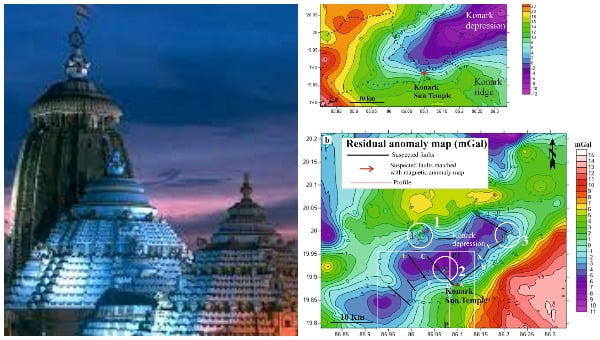Earthquake Risk To Puri Jagannath Temple!
Has Seismic Study been done in the DPR or Risk Assessment Report?

The Odishan coast, which lies between the Bay of Bengal in the east and the Eastern Ghats hill ranges in the west, is extensively traversed by the distributaries of the Mahanadi. While some of these distributaries are still active, many others have vanished and are now abandoned channels. Prominent among the two ancient abandoned rivers are the Chandrabhaga in Konark and Saradha in Puri.
The Odisha Coast, particularly the Puri-Konark region, is located in Zone III of the Seismic Zonation Map of India comprising the towns of Puri, Konark, Cuttack and Bhubaneswar. Evidence of earlier seismic activity in the coastal region has been observed from the presence of different sets of subsurface neotectonic faults. The region is traversed by three different sets of faults that control most of the river distributaries.
The 2021 study “Neotectonic activity along the Odisha and its implications on Odishan temples” by Subhamoy Jana, William Mohanty et al. conducted by the Department of Geology and Geophysics at the IIT-Kharagpur focused on finding the causes for the collapse of Sun temple and the disappearance of the Chandrabhaga using satellite imagery and geophysical data. During the study, gravity and magnetic anomalies revealed the presence of two sets of faults, trending NW–SE and NE–SW, in the Puri-Konark area. Reactivation of these faults was supported by evidence such as shifting of river channels, asymmetric arrangement of ox-bow lakes and combing features along the river bank and distributaries of the Mahanadi. From a geological perspective, this study suggests that neotectonic activity may have been responsible for the collapse of the Sun Temple at Konark.
Neotectonic activity in the form of earthquakes of magnitudes 2–5 has occurred in several parts of Odisha. On May 21, 2014, an earthquake of magnitude 6 on the Richter scale took place in the Bay of Bengal. A medium-intensity earthquake, 60 kms east of Paradip at a depth of 10 kms at 9.52 PM. Tremors were felt till Delhi. While investigating the causes of this, scientists ascribed these to onshore-offshore tectonic linkages, which led to the reactivation of the NW–SE faults in the sea, these faults also extend into the Puri and Konark region. The IIT study shows that the coastal region of Odisha is undergoing tectonic activity in the present day as a result of the reactivation of the faults crisscrossing the basement of the Mahanadi delta.
Odishan temples area complex convergence of mathematical, geometrical and astronomical calculations. They have stood with unmatched beauty and grandeur against the forces of nature, and are the living evidence of structural efficiency and technological skill of our ancient craftsman and master builders. They adopted unique building techniques with adequate structural strength to overcome earthquakes.
According to Hindu mythology, a Purna Vastu or a perfect building is that which is properly oriented and constructed with carefully laid out norms to protect it from the evil forces of nature, which include floods, storms, hurricanes and earthquakes. The 22nd chapter of Bramha Samhita, contains 107 chapters on science and technology, describing earthquakes and various aspects with reference to earthquake resistance of temples.
The Odia Sthapatis of the olden days devised many efficient solutions to provide adequate structural strength to the different roof profiles. Some of the roofs slope inwards and only extensive supports in the interior will prevent the roof slab from collapsing. The roofs of Odishan temples, like their ground plans, are rectangular in every horizontal section. However, the vertical joints in the corbelling were set at right angles to the ceiling of the chamber instead they are set radially as though this were a circular building. If the stone slab tips over it cannot fall since it is cut in a conical shape and held in position by the neighbouring slab. These characteristic configurations and simple geometric forms have increased structural strength against earthquakes. Thoughtfully conceived, these constructional practices were executed with extraordinary perfection and have resulted in structurally sound structures, which have proved earthquake-resistant to a considerable extent.
India has witnessed several earthquakes since ages. The basic reason for the occurrence of the earthquake in India is the moving of the Indian plates into the Eurasian plates underground which tends to shake the upper habitation. Odisha too has seen moderate rumblers in recent times. The IIT study does ring alarm bells.
Jagannath, Konark and Lingaraj temples are already in fragile and dire straits. Weathering of the Khondolite stone blocks, climate change, and improper care have rendered these holy places unsafe. The State Archaeology is a defunct organisation, the ASI has a lackadaisical approach in the state.
In its 2020 report: “State of Built Heritage of India: Case of the Unprotected”, the Architectural Heritage Division of INTACH has compiled state-wide data on the protected and unprotected sites. Unfortunately, Odisha heads the list with just 79 ASI-protected monuments and 218-state protected monuments against the 7200 monuments listed by INTACH in various districts. There are many more undocumented temples, if proper identification is done, the state has more than 12,000 ancient monuments. The rampant temple thefts of idols are an indicator of this.

Comments are closed.